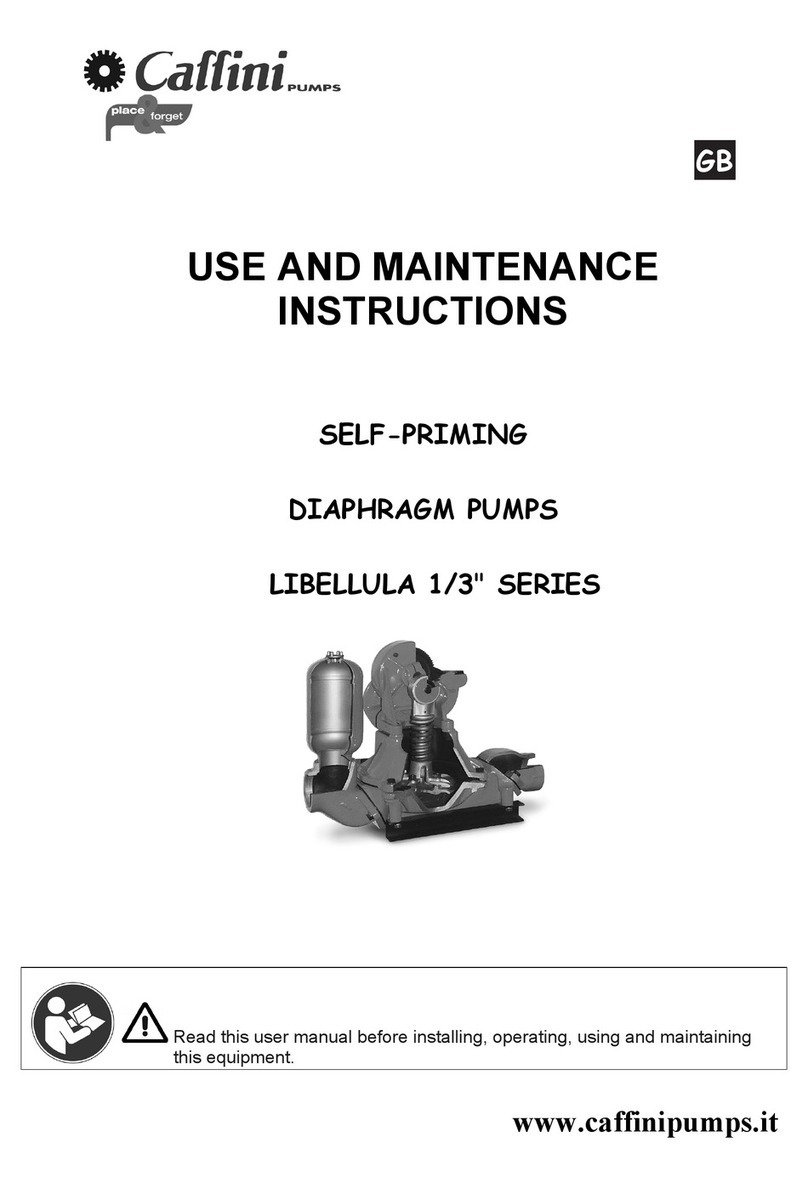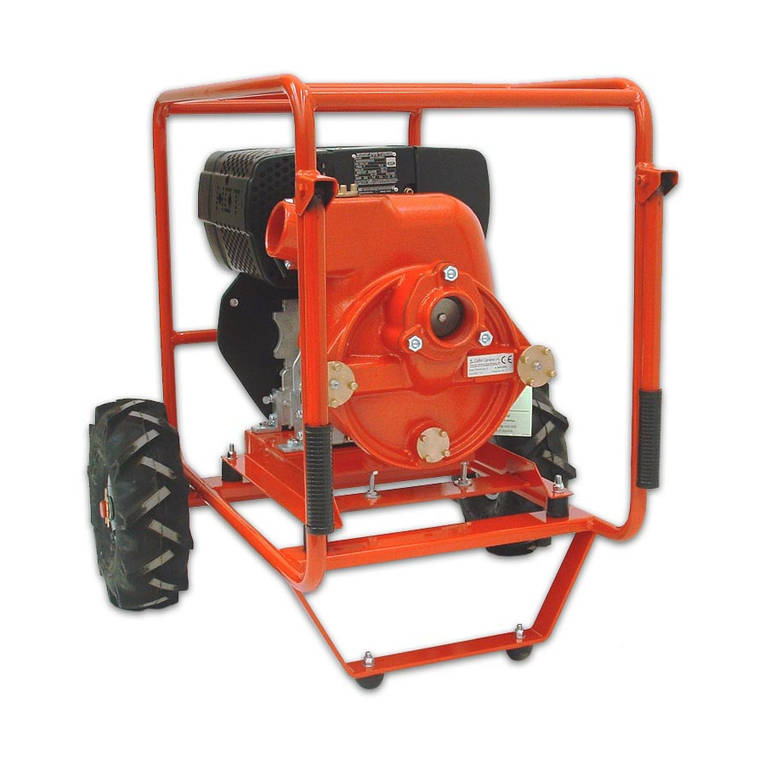
7
The machine can only be handled with the suction and delivery piping disconnected and with the power supply
motor still or disconnected.
The machines installed on frame can be handled with lifting appliances that can be connected to the lifting
hook envisioned on the same machine, using suitable safety systems.
The machines installed on trolleys can be towed using opportune tow hook connection that will be fixed to the
frame using pin and safety pin preventing the same pin from coming out. Pre-emptively ensure that the
parking stand is lifted and fixed to the frame by means of pin and relative safety pin.
The machine must be transported in horizontal position and in optimal safety conditions.
Lift the unit using only the eyebolts fixed to the frame.
Before handling the machine, check dimensions and weights on the plate.
Do not stand within the action range during handling of the machine.
During the start-up and maintenance interventions, envision a safe transport of all components using
appropriate harness. Handling must be carried out by specialised staff to avoid damaging the machine and
causing accidents to staff.
The lifting points of the various components must only be used to lift the components for which they were
supplied.
Maximum movement speed: 0.5 m/s.
Do not stand or transit underneath and near-by the machine when it is lifted from the ground.
To anchor the machine to the transport surface, block the same using ropes or chains.
N.B. No additional accessory can be connected to the motor pump or electric pump unit during the lifting or
the handling.
10. STORAGE
In case of storage, arrange the machine in a closed place; if left in the open, cover it with a waterproof lining.
Avoid humidity accumulating around the machine. Do not leave the pump body full of liquid. Drain it through
appropriate drain plug. The liquid may freeze during the winter months and damage the system. When the
liquid is dangerous, take all necessary precautions before draining the tank to prevent damages and accidents.
Periodically start the pump for a few seconds to avoid scaling inside the same pump.
11. INSTALLATION
With regard to the use of engines coupled with pump, reference is made and the Standards given by the
manufacturers of the same engines are expressly recalled, attached to this use and maintenance manual.
Install the electric pump or motor pump units provided with metal frame on stable foundations and well
anchored to the ground.
Ensure the parking stand of the versions on trolleys is blocked in the support position by means of the fixing
pin with insertion of the safety pin preventing the pin coming out from its seat.
The connection piping to the pump must be of flexible type or provided with flexible rubber bolt to dampen
the vibrations due to the button flow rate.
It is a good rule to prevent entry of large solids (max dimension 28 mm), that might break the diaphragm or the
connecting rod, by mounting a protective film at suction, supplied upon request.
The suction and delivery piping must have a diameter equal or above that of the suction and delivery ports of
the pump.
Avoid curves, elbows or bottlenecks as much as possible that might limit the inflow or flow rate of the liquid to
or from the pump.
Do not assemble shut-down valves: the pump is provided with clapet valves that work as check valves.
Do not assemble flow choking valves on the delivery; to reduce the flow rate, envision a by-pass piping on the
delivery, with return to suction basin, adjusted by ball or shutter valve.
Ensure all joints are perfectly air sealed: check the threads, the gaskets of the adapters, of the ports, and of the
quick couplings.
Install the pump as close as possible to the fluid to be pumped, trying to decrease the length of the suction
piping as much as possible (the maximum suction height is of 7 metres); in this way, the priming time
decreases and greater flow rate is obtained.





























